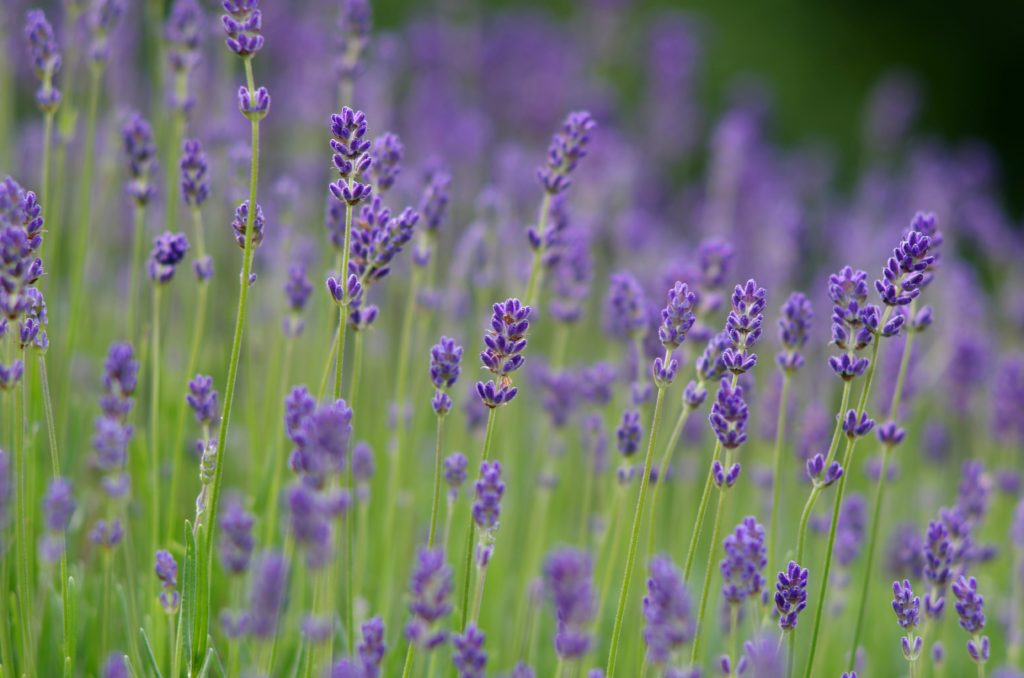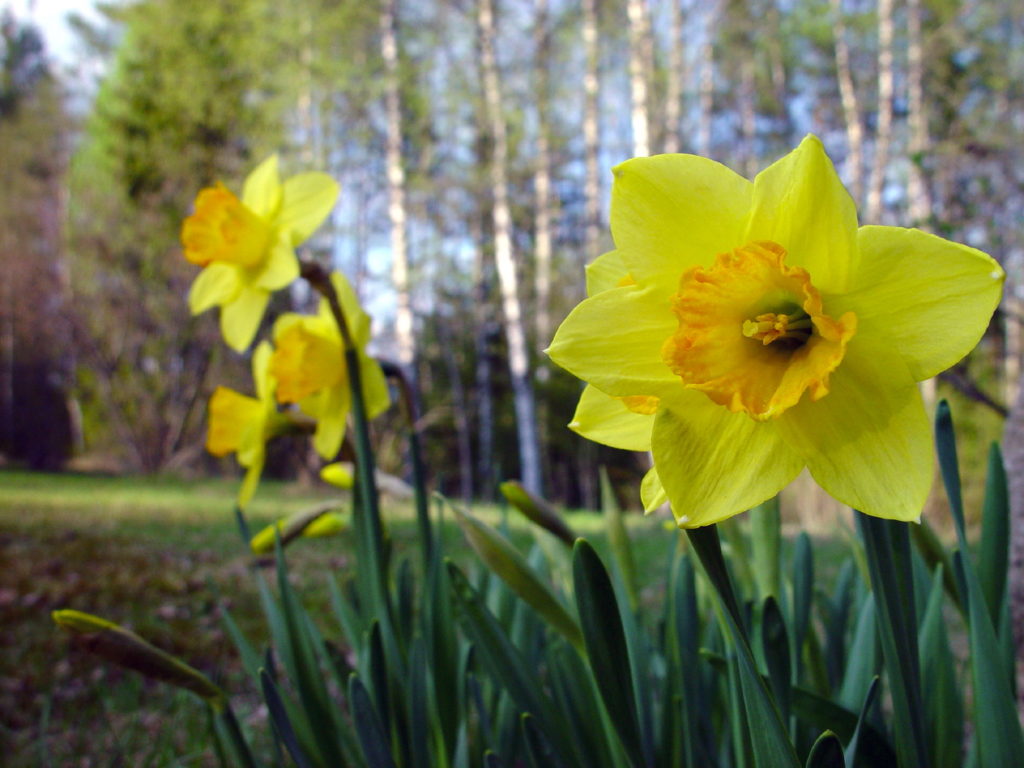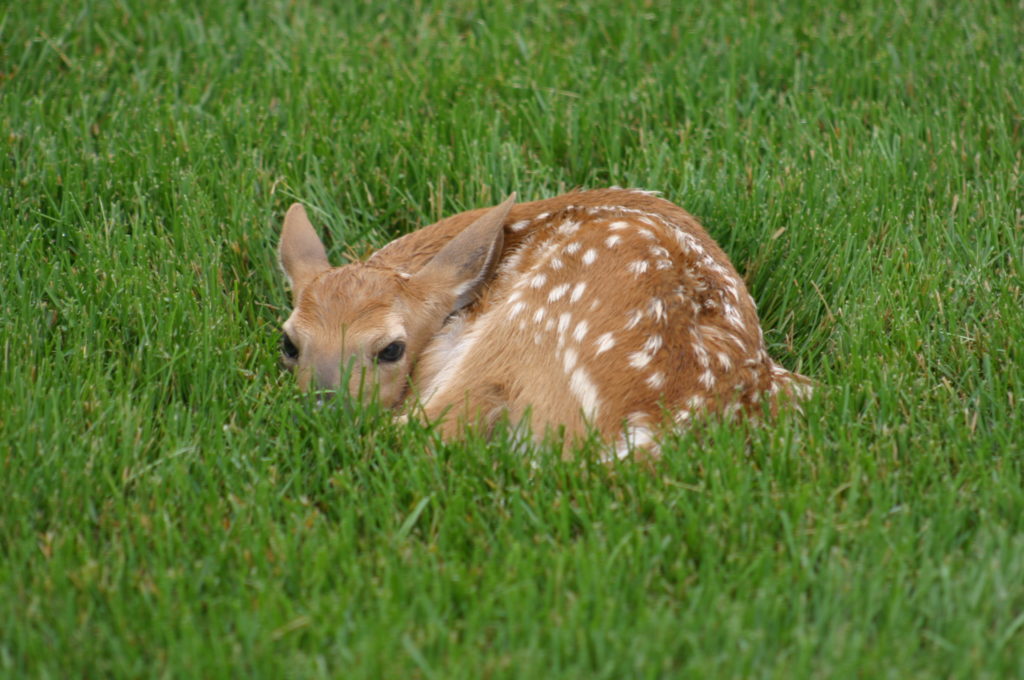While Bambi and some of his other friends might look cute, deer wreck havoc in your garden and yard, they can also bring ticks with them. Whether you’re growing vegetables in your garden or flowers you’re also actively growing a food source for deer. Deer can eat a lot, 6-10 lbs a day of greenery, especially in the spring time after a long winter which has caused them to lose weight, in addition they are nursing fawn. There’s a few techniques and tips to keep deer out of your garden and yard. There are techniques that include using barriers like fencing, deer repellent plants, smells and other organic solutions.
Don’t create a buffet
Deer have a sophisticated palette and they have certain tastes. If you are growing these types of plants and vegetables, you’re ringing the dinner bell. Deer typically enjoy lettuce, beans, peas, hostas, pansies, english ivy, hostas, roses, day lilies, and most narrow leaf evergreens. Unless you are actively fencing these plants don’t bother planting them. In most New Jersey Suburban areas, deer are plentiful.
- A few of their other tasty snacks they love:
- Bulb type flowers – so most springtime flowers like tulips.
- Fruit – We’ve mentioned before that fruit trees invite pests and other critters to your yard, make sure to add deer to that list; blueberries (A Jersey classic) and Apples are a favorite snack for deer.
Create a Natural Barrier
If deer are hungry enough they will eat whatever you have, with that being said there are some plants they avoid. Just like some humans avoid some stinky cheeses, deer avoid plants and flowers that they deem as “smelly.” Deer stay away from poisonous plants like daffodils, foxgloves. Deer will also avoid flagrant plants and herbs like lavender, peonies, and sage. Deer repellent flowers and plants are part of a strong offense and defense. Strongly scented plants like garlic, chives and mint can help to mask the scent of your tasty plants.

Deer do not like textures
Do have a preference for smooth leafy plants, plants with thorns, or hairy features to help ward off deer. Fuzzy plants like lamb’s ear, barberries are a turn off to deer so planting these plants strategically near the tasty items may help to lessen or avoid your plants and flowers from being eaten.
Make Substitutions
As we’ve mentioned there are many plants that attract deer to your lawn, you can make some substitutions if deer are consistently finding themselves in your yard. An easy substitution for your tulips would be Daffodils. Some people will suggest thorny roses, but beware sometimes the risk is worth the reward for deer and they will eat the bulb of the rose.

Fence it in
Fencing your entire yard is the most effective way to keep deer away, as you’ve likely seen, deer are effective jumpers, they can jump as high as 8 feet standing and 12ft running. Fences are not much of a challenge for deer so unless your yard has an 8 ft fence they will try to get in. Deer are intelligent animals. If they see something they like, like your garden they will try and get it and work a solution to the problem. If you are unable or unwilling to put the cash up for a high fence you may want to take the route of fencing in just your garden.
Use fishing line
The inexpensive route can also prove to be effective, fishing line when used correctly creates an invisible barrier that confuses deer and makes them flee. Put some posts up around your plant beds and garden and string fishing line around your plants. You want the fishing line to be around 3 feet high for the deer’s feeding zone.
Let your dog out

Man’s best friend is truly the greatest, besides warming your feet in the winter your dog is an effective form of deer repellent in the Spring. Letting your dog out in the yard is an effective way to keep deer away, their natural scent and their bark will keep your plants safe.
Scare them
Deer are skittish animals and fear things that are unfamiliar to them, there’s several techniques combined with other tactics listed that will help to keep deer away.
- Loud noises – wind chimes can be effective, jingle balls on certain plants can also be effective.
- Motion activated sprinklers
- Moving lawn ornaments – not the most attractive but scare crows with moving elements can be effective
- Motion lights – these are effective but only for the short term until the deer realize they are harmless.
Homemade and store bought deer repellents
Repellents are fairly effective against keeping deer away from your tasty and attractive plants and flowers. Deer repellent whether bought at the store or made in the kitchen need to be used frequently, they are not one and done. It’s recommended to rotate your deer repellents and experiment with what works best. Using a combination of both DIY deer repellent and store bought ones is effective to outsmart deer and prevent them from adapting to the smells these products give off.
Homemade deer repellent
Making your own deer repellent can be pretty easy from using bars of soap on string and fabric softener sheets. You can use multiple techniques and it is a good idea to rotate them throughout the season. You can use common food items like garlic and even make a hot sauce solution to spray around your plants. General rule of thumb is that if it smells absolutely terrible it’ll likely work against warding off deer, they hate the smell of rotten eggs. Below is a quick homemade deer repellent spray recipe (please label it in your fridge). Also test it on a small spot to make sure that it doesn’t damage your plants first.
- Mix four eggs into a quart of water
- Add in 3 oz of tabasco hot pepper sauce.
- Pour everything into a spray bottle and use.
- Refrigerate and respray every two weeks or after it has rained
Store bought deer repellent
There’s several effective deer repellents on the market, the majority of them using some form of a smelly egg solution. Some contain capsaicin, the same compound found in hot peppers that are intended to keep humans from eating them, should work for deer. Other products contain ammonium salts that prove to be effective. Its a good idea to try and rotate several different brands to avoid deer adapting to the smell. We also strongly advise to spray frequently especially after rainfall.
- Safer Brand Deer Off Repellent Station Stake For Deer – $21.99 – can be found at your local Ace Hardware.
- Liquid Fence Animal Repellent Spray For Deer and Rabbits– $17.99
- Liquid Fence Animal Repellent Granules For Deer and Rabbits – $19.99
Remember deer are smart
Keeping deer out of your yard requires you to rotate and use several different tactics at a time. Deer can adapt quickly, so a smell, a sound, a type of blinking lights and other deterrents can work one day and not the other. If a deer doesn’t have an adequate food source nearby, they will have more incentive to get into your yard. Making your yard more “deer proof” than your neighbors is sometimes all you need.
